How Much Power Does A 4.5 kW Solar System Produce?
Hi there!
If you've been around solar circles, you've probably heard about solar systems and the benefits they provide. You might've even heard terms like Watts, wattage, kilowatt-hours, and so on being thrown around.
But most likely, you’ve often been left wondering how these terms relate to you and your solar installation. In fact, you’re not alone, as plenty of people have a hard time understanding exactly how much power a solar system of a certain size (kW) can generate.
Here, we answer your questions, including:
- How much power does a 4.5 kW solar system produce?
- How much power does a 10 kW solar system produce?
- How much power does a 15 kW solar system produce?
- What is needed for a solar power system?
- How many solar panels do I need for 4.5 kW?
- What can I run on a 4.5 kW solar system?
- How much does a 4.5 kW solar system cost in 2022?
- Your Best Bet - Renogy Solar
Our answers to the above questions will empower you with the information you need to choose the system size that’s right for your home or business.
Let’s get started.
How much power does a 4.5 kW solar system produce?
To determine how much power a 4.5kW solar system will produce, you need to know what a 4.5 kW solar system is.
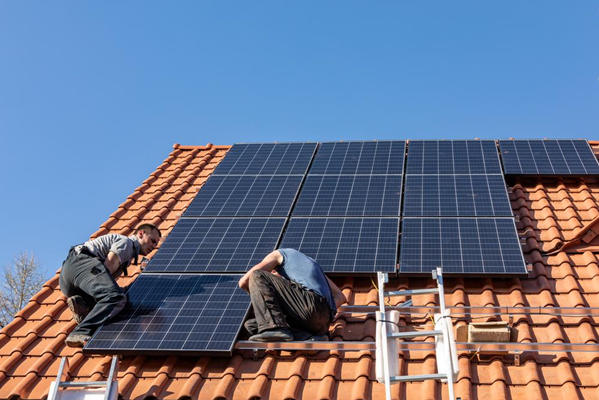
A 4.5 kW solar system usually refers to a solar installation with an array of solar panels with a total wattage of at least 4.5 kW or 4500W. The individual wattage of the solar panels in the array doesn't change the amount of energy produced by the whole solar panel array.
So to calculate the amount of energy produced by a 4.5kW system you only need to know:
1.The system size, e.g., 4.5kW, 10kW, etc.
2.The peak sun hours in your area. You can find the peak sun hours for your area here. Please keep in mind that peak sun hours can still vary by region within a state.
Once armed with this knowledge, finding out how much power or energy your 4.5kW solar installation will produce is easy.
You only need to multiply your system size (4.5kW) by the number of peak sun hours in your region.
Amount of Power Produced(Wh) = System Size(W) * Peak Sun Hours(h)
In the following examples, we are going to calculate the minimum amount of power generated by a 4.5kW system in three different states:
Example 1 – New York (3-3.5 peak sun hours)
4500W * 3h = 13500Wh or 13.5kWh
Example 2 – California (5-7.5 peak sun hours)
4500W * 5h = 22500Wh or 22.5kWh
Example 3 – Arizona (7-8 peak sun hours)
4500W * 7h = 31500Wh or 31.5kWh
On average, a 4.5kW solar system will produce between 15000Wh to 22500Wh (15kW-22.5kW).
Note:
To find out how much energy a solar panel produces per day, multiply the panel’s wattage with the number of daily peak sun hours.
How much power does a 10 kW solar system produce?
We are going to repeat almost the same process we used above. We need to know our system size (10kW or 10000W) and the number of peak sun hours in your region.
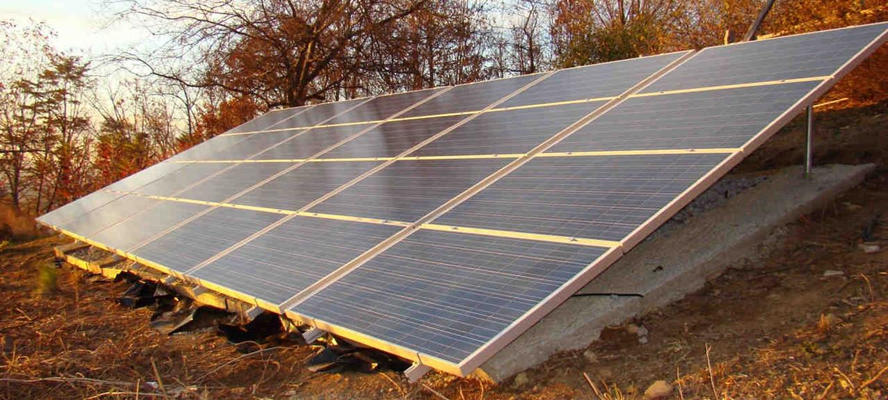
Suppose you lived in an area that gets 5 peak sun hours each day, your 10kW solar installation would generate:
Amount of Energy Produced by 10kW System (Wh) = 10000W * 5 hours
Amount of Energy Produced by 10kW System (Wh) = 50000Wh or 50kWh
With different peak sun hours, the same 10kW system will produce different amounts of energy. For example, under 4 peak sun hours, your system will produce 40kWh and under 3 peak sun hours, it will be 30kWh, etc.
According to the US Energy Information Administration, the average US household used approximately 30kWh or 30000Wh of energy daily. So a 10kW solar system is more than enough to power the average household away from a grid supply, provided your region gets at least 3 peak sun hours.
How much power does a 15 kW solar system produce?
We repeat the same process used for the 4.5kW or 10kW solar systems above.

We multiply the system size by the number of peak sun hours in your area. We will use 5 peak sun hours in our example below. If your region gets a different amount of peak sun hours, replace the ‘5’ with your region’s peak sun hours.
Amount of Power Produced by 15kW solar system = System Size (W) * Peak Sun Hours (h)
Amount of Power Produced by 15kW solar = 15000W * 5 hours
Amount of Power Produced by 15kW solar = 75000Wh or 75kWh
On average, a 15000W solar system will produce between 45kWh and 75kW of energy.
What is needed for a solar power system?
A solar power system is made up of a combination of devices that allow a household or business to power their electrical devices using power from the sun.
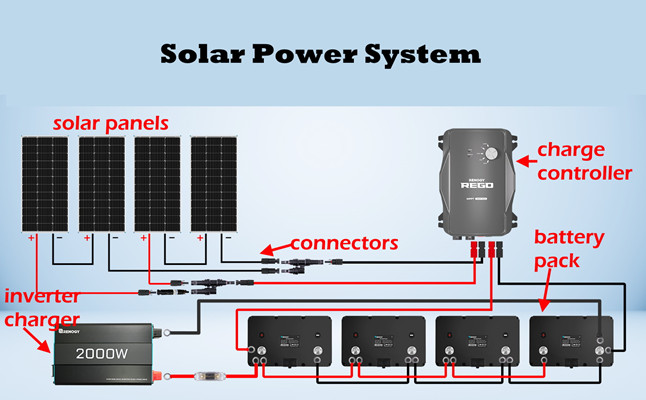
It consists of about 6 main components. Sometimes, some of these devices can be combined into a multipurpose device.
1. Solar Panels: Generates energy by converting light from the sun into DC electrical power.
2. Inverter: Converts DC electrical power from the solar panels or batteries into AC electrical power used by most appliances.
3. Converter: Converts AC electrical power from the grid into DC electrical power that is used to either charge your batteries or power DC appliances.
4. Charge Controller: Controls and regulates the incoming power generated by the solar panels so that it doesn’t damage the battery or batteries.
5. Battery or Battery Pack: Stores DC electrical power for use during the night (when the solar panels don't work) or when there's no grid supply.
6. Connectors: These are wires used to transmit and distribute electrical power between the different devices in the solar power system. An example is the wires that link your solar panels to the charge controller.
Of course, the above are not all the devices needed in a solar power system. Other crucial accessories are mounts, brackets, circuit breakers, fuses, bolts, racks, etc.
If buying various components seems daunting, we recommend you check out our Renogy solar kits which have everything you need to set up a working solar installation.
How many solar panels do I need for a 4.5 kW solar system?
Many often find themselves in the trap of getting the most powerful solar panel with the highest wattage instead of getting the most suitable solar panel for your installation.
At the end of the day, what matters is the total wattage of your panels instead of the individual wattage of the panels in the system. Different panel wattages only mean you need more lower-wattage solar panels to generate the same amount of energy as a few higher-wattage panels.
Take a look at the table below that has how many Renogy panels of each wattage you need to build a 4.5kW solar system.
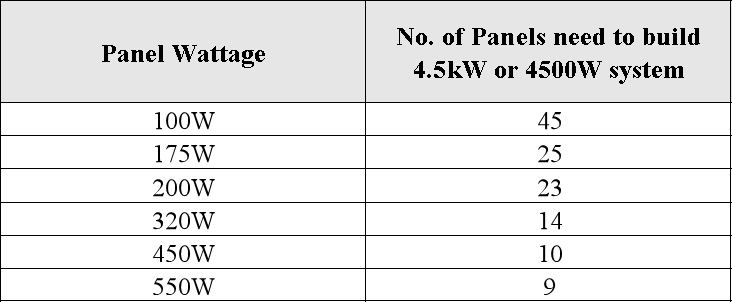
What can I run on a 4.5 kW solar system?
If the total wattage of your solar panel system is 4500W, you can generate anywhere between 13500Wh and 31500Wh of energy in the US.
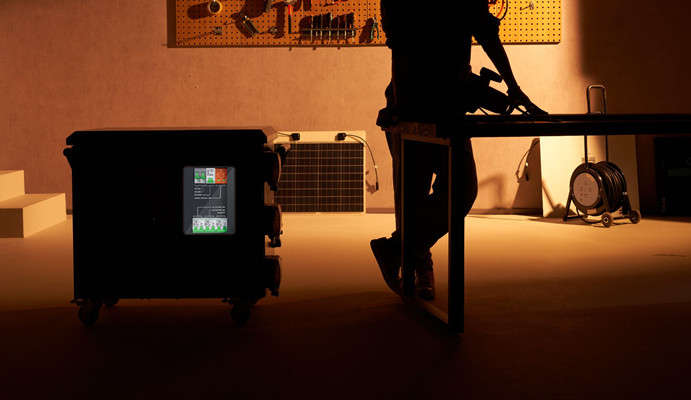
The 31.kWh is generated in states like Arizona and California which can get 7 peak sun hours. In contrast, 13.5kWh is generated in areas like Pennsylvania and Massachusetts that get a low 3 peak sun hours.
Using the minimum 13500Wh as our guide post, which is about a third of the average energy used by a US household. We see that we can power almost any device that’s below 3000W depending on the inverter’s size.
Here’s a table with common household devices, their wattages, and how long a 13500Wh energy capacity can power that device.

With the right adjustments and conservation methods, a 4.5kW solar system should be able to power your home.
If you live in areas like Pennsylvania, Alaska, and Connecticut that get low peak sun hours, additional supply from the grid might be needed. That being said, the 4500W system can still reduce your power utility bills significantly.
If you live in areas like California, Arizona, and other areas that get at least 5.5 peak sun hours, it’s possible to power all the devices in an average US household as if it was on the grid. However, it’s recommended that you don’t use high-wattage devices like stoves on your solar circuit due to their high energy demand from your batteries.
How much does a 4.5 kW solar system cost in 2022?
Below you will find a table containing the costs of 4.5kW solar systems composed of different panel wattages. The individual panel wattages range from 100W to 550W, which is typically the range suitable for fixed rooftop or ground installations.
Our calculations are done using the default list prices, so you can take advantage of our promotions to get a sizable discount during your purchase.

If you look at the above table closely, you find that the Renogy 320W Monocrystalline Solar Panel offers the perfect blend of size, cost, and the number of panels.
Do note that the prices listed in the table above do not include the cost of the inverter, battery pack, charge controller, and other accessories needed for a solar installation. You will need to buy these items separately if you are not purchasing a pre-matched solar kit.
For the inverter, it’s wiser to buy an inverter charger that combines the features of both an inverter and a converter. An inverter charger not only powers your home, but also charges your battery using the grid supply. Some inverter chargers also have a built-in charge controller for solar panel charging.

We recommend buying an inverter-battery set consisting of one 3000W 12V PSW Inverter Charger and three 12V 100Ah Lithium Iron Phosphate Batteries. This set costs approximately $3,000 but could be much lower due to our buyer discounts. Alternatively, you could opt for more affordable AGM or Gel batteries of equal voltage and capacity.
Altogether, a 4.5kW solar power system with 14 * 320W panels, 1 * 3000W 12V inverter charger and 3 * 12V 100Ah batteries can cost around $8,600. This value can be lower or higher depending on your final purchasing decisions.
Your Best Bet - Renogy Solar
As one of the leading manufacturers in the solar industry, Renogy prides itself on delivering quality products that will last you a long time. That's why we have robust policies, warranties and community to help you in case you are not satisfied with a Renogy product.
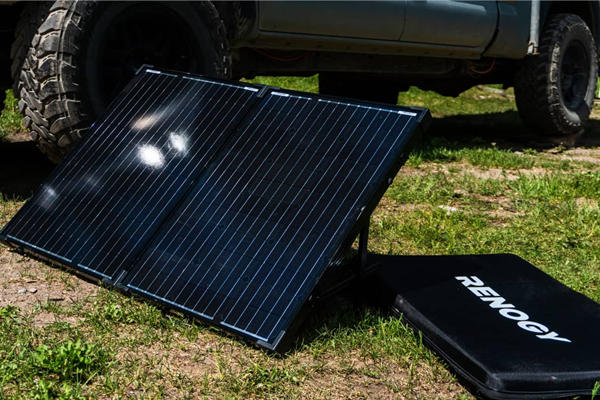
Renogy offers all the products, components, and accessories you need to set up a working solar installation today.
We also have 400Ah 12V batteries and 48V solar systems that are blazing a trail forward for efficient solar technology for today and tomorrow.
Our high-quality solar devices continue to receive positive reviews from previous buyers and independent reviewers on different platforms.
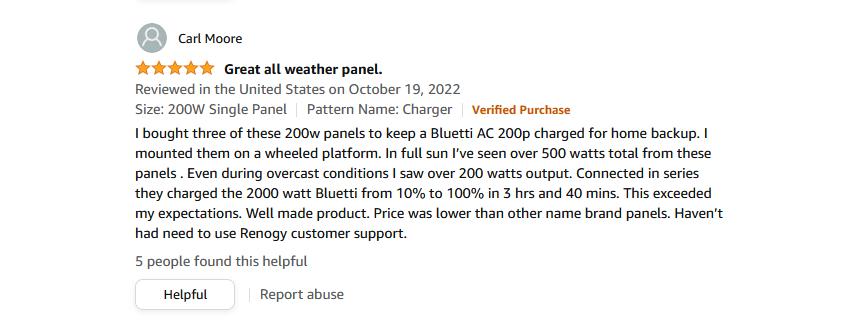
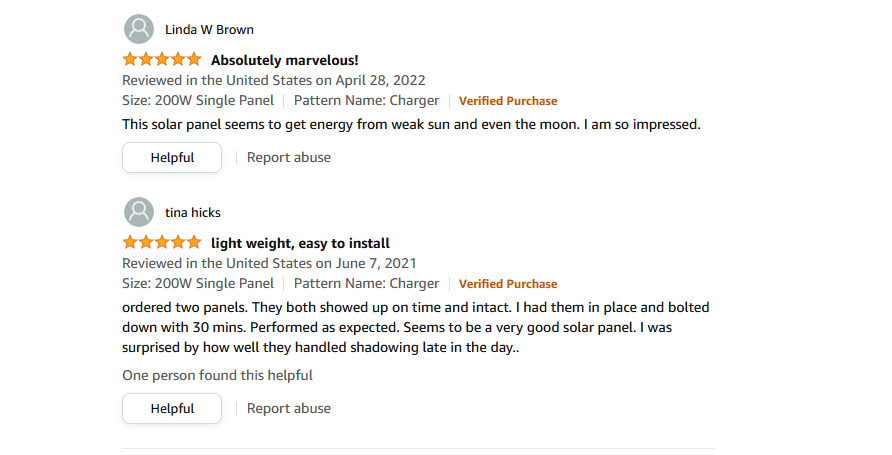
To learn more about our products and promotions, visit our homepage or contact us.
Thanks for reading.
Related articles:
How Long Does It Take To Install Solar Panels: 2023 Guide
Important Things You Should Know When Buying A House With Solar Panels
Different Types Of Solar Panels: Which The Right Type For You
Solar Panels Usage: The 9 Most Common Uses Of Solar Power
Everything You Need To Know About The Highest Wattage Solar Panels








